Harkening back to the Sonus faber of old, the new Minima Amator II is a modern-day take on Sonus faber’s original Minima Amator from 1992. Sporting a solid walnut cabinet, the Minima Amator IIs were designed to show just how far Sonus faber has come from a design and engineering perspective.
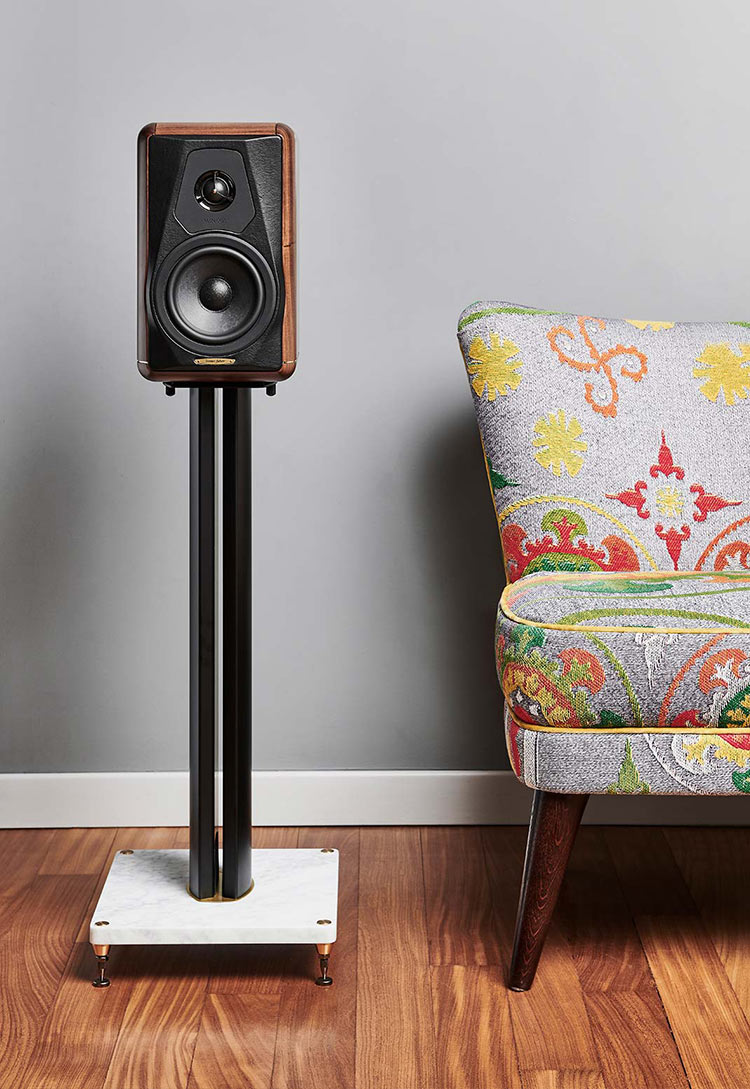
Sonus faber Minima Amator II Bookshelf Speaker
- Beautiful design with gorgeous solid walnut cabinetry
- Flawless construction quality
- Balanced sound
- Huge sound stage
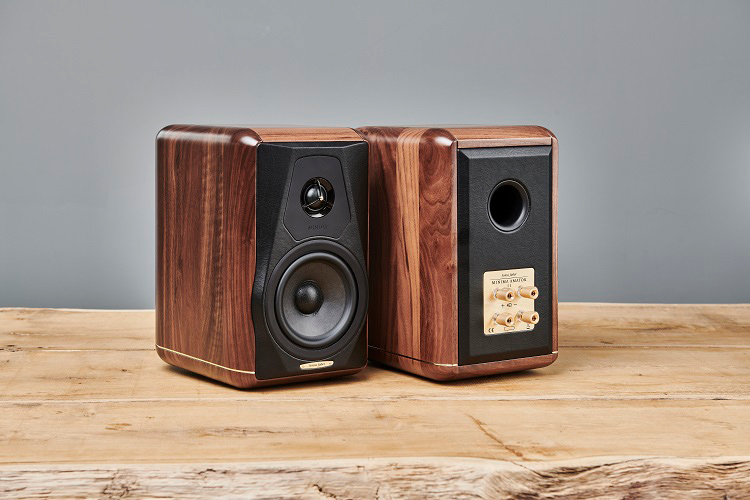
Design:
2-way ported bookshelf loudspeaker
Drivers:
1x 28mm silk Damped Apex Dome™ tweeter, 1x 150mm natural fiber mid/woofer
Crossover:
Paracross™ 2500Hz @ -6dB
Frequency Response:
50Hz-35kHz
Sensitivity:
87dB
Nominal Impedance:
4 ohms
Recommended Amplifier Power:
35-150W
Dimensions:
(W x H x D): 7.8” X 12.8” X 10.8”
Weight:
15.7lbs each
Warranty:
5 years parts and labor
MSRP:
$2,000 each
Sonus Faber:
SECRETS Tags:
sonus faber, bookshelf speaker, minima amator II, speaker review, Bookshelf Speaker Review 2020
For those of you who don’t know, Sonus faber was one of the first companies to put as much effort into making their speakers look as good as they sounded. For a long time, beautifully carved wood cabinets were a big part of Sonus faber’s brand identity. However, as we now know, hardwood is not necessarily the best material from which to build a speaker cabinet. It creates issues with resonance control and can often impart its own tone into a speaker. As a result, Sonus faber abandoned using wood in the 1990s in favor of MDF. One of their last solid hardwood speakers was the original Minima Amator, released in 1992. Fast-forward to today, and we have the new Minima Amator II. Created not only as an homage to the original Minima Amator, the Minima Amator II was designed to showcase much of what Sonus faber has learned in the past 27 years in terms of cabinet and driver construction. Is the Minima Amator II as good as other recent Sonus faber designs or does it suffer from the same issues as earlier hardwood cabinet models? Let’s hook them up and find out.
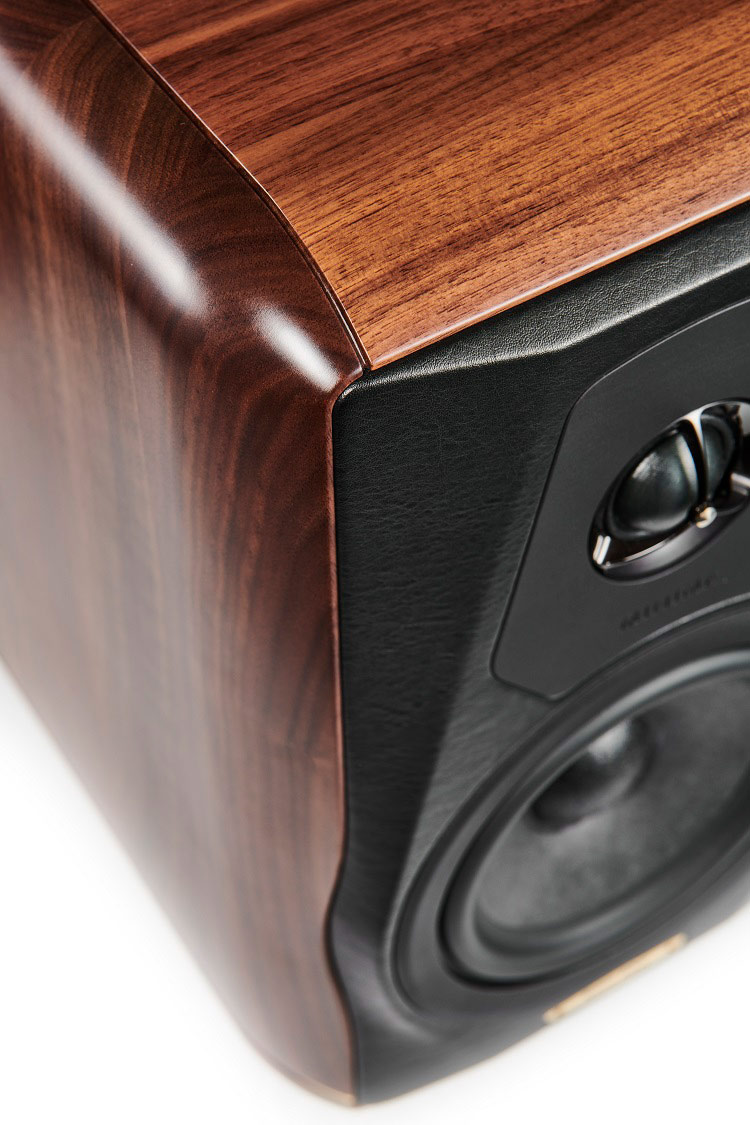
The Sonus faber Minima Amator II is a fairly simple two-way bookshelf speaker as far as the specs say, but there are a few very interesting construction details. Let’s talk about the cabinet first, which is really a work of art in its own right. First, the cabinet is made of solid walnut. Not MDF with a finishing veneer of walnut, but real honest-to-god wood. The two side panels look as if they were cut from a single piece of walnut, with the top and bottom plates also appearing to be somewhat matched as well. The top and bottom panels are stained in a slightly lighter color than the side panels, which is a nice aesthetic touch and looks really good.

Not content to show the world that they could just use solid wood as a cabinet material, Sonus faber also integrated a line of solid brass all along the bottom. This adds a subtle, but very classy touch to the overall look of the speaker. On the bottom panel are four small rubber feet for bookshelf mounting as well as a pair of threaded inserts to match up with Sonus faber’s Carrara stands (MSRP: $1,500) or the more subtle Unicum stands (MSRP $199). The walnut is finished with a satin clear coat that has enough luster to bring out the depth and richness of the wood without being too reflective. It also feels really nice when you touch it, which is something many guests in my house feel the need to do. While I loved the classic walnut/brass look, I couldn’t help but think how sweet the Minima Amator IIs would look in Sonus faber’s Graphite stain, with a brushed nickel metal accent strip to complement the Graphite color’s more modern touch. C’mon Sonus faber, give us another color choice! Around back are two very sturdy sets of five-way binding posts so you can remove the included jumpers and bi-wire or bi-amp the speaker if you choose. Above the binding posts is the single rear bass port.
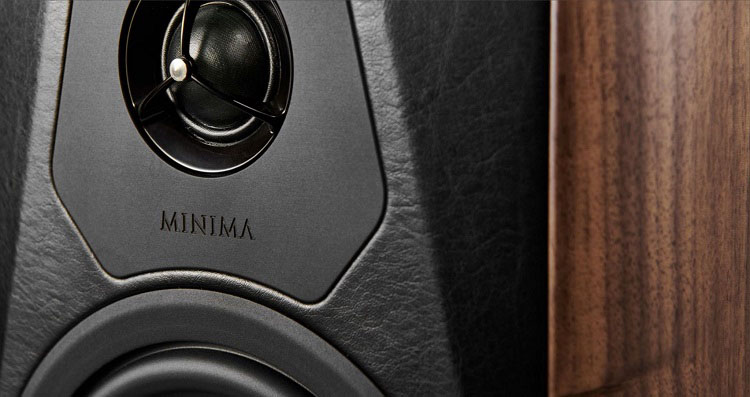
On the front, you have the “Voice of Sonus faber,” which is the name for the tweeter/mid-woofer combo. The tweeter is Sonus faber’s 1.1” Damped Apex Dome™ unit, which is a soft-dome tweeter with a tripod-style waveguide. The mid-woofer is a 150mm unit comprised of a mix of cellulose pulp and other natural fibers. Soft black leather covers the rest of the front baffle and surrounds the driver array. Magnetically attached soft cloth grilles are also included if you wish to cover up the drivers, though I wouldn’t hide the beautiful leather baffle and drivers unless absolutely necessary.
Setting up the Minima Amator IIs was relatively painless. Compared to large towers (like the Sonus faber Olympica Nova Vs I recently reviewed), it is so nice to be able to get them in place without assistance. I pulled the speakers from their well-protected box, slipped off the thick fabric covers, and placed them atop a pair of Dynaudio Stand4s. Here is where I ran into the only minor glitch in the whole review process. The Minima Amator IIs have four small rubber feet on the bottom panel. These are perfect if you are placing the speakers on a table or bookshelf, but they make things a bit more difficult if you are using stands other than Sonus faber’s. Due to the thickness of these feet, I had to use some really large balls of Blu-Tack to get the speakers securely mounted to the top of the Stand4s. Even then, I wasn’t completely satisfied with how securely the speakers were attached. If you are considering mounting the Minima Amator IIs on stands, I highly suggest you purchase either Sonus faber’s Carrara (which has a beautiful marble base) or Unicum stands. Both of these stands are designed to bolt onto the Minima Amator IIs and will give you a much more secure setup.
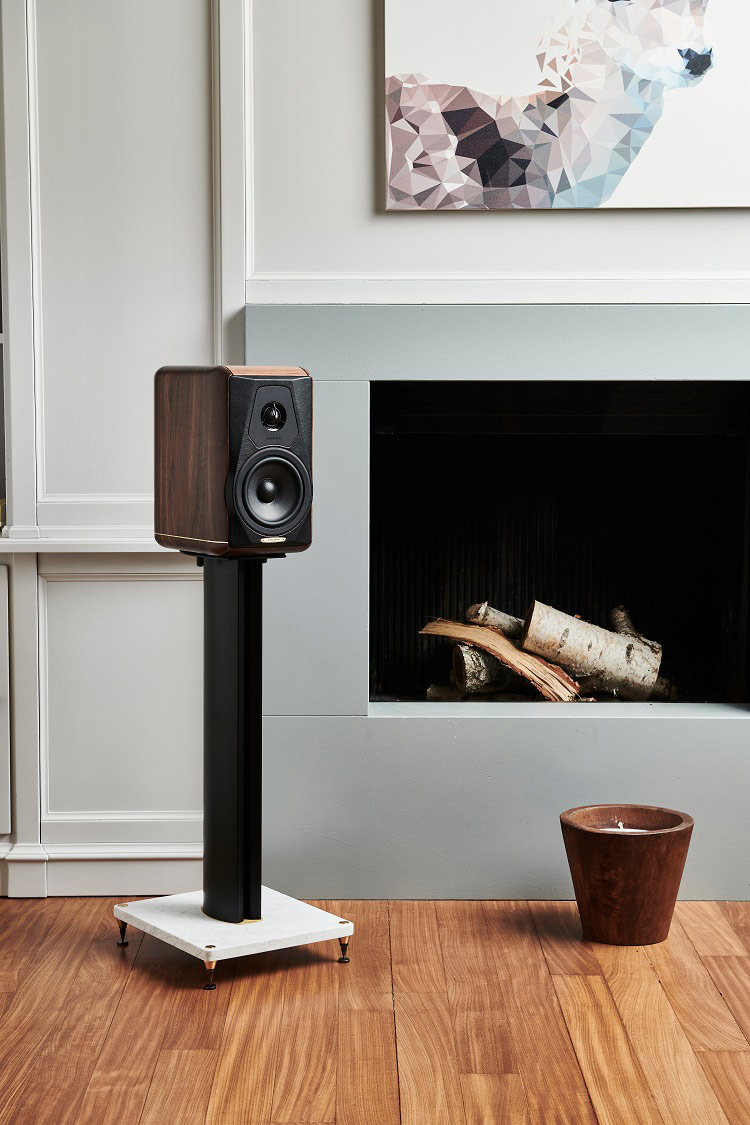
With my mounting issue minimized, the speaker terminal jumpers were removed so that I could hook up bi-wired Kimber 4VS cables to a Wyred4Sound multichannel amp. The amplifiers for the left and right front channels are putting out roughly 525W at 8 ohms, and nearly a kilowatt (1000W) at the Minima Amator II’s 4-ohm resistance level. The amp was connected to a Marantz AV8801 preamp/processor via XLR cables. I ran the Marantz in Pure Direct mode for most of the review period with the Minima Amator IIs set to full range rather than crossed over to a subwoofer. I used an OPPO UDP-205 universal disc player to spin all the media for this review, whether CD, high-resolution disc (SACD, DVD-Audio), FLAC, or DSD files via the OPPO’s USB inputs. My Hsu Research VTF-3 Mark II and ULS-15 Mark II subs rounded out the configuration, but I ran the Minimas without them for almost the entire review period. With everything hooked up, I used a combination of test tones and music to position the speakers in my room. My final placement wound up fairly close to where I have positioned bookshelf speakers in the past with two differences. First, I found that I preferred the overall sound with the speakers closer to the rear walls than usual. I settled on about 30 inches between my front wall and the speakers’ rear baffles. I thought that this would make the bass a bit too boomy, but that was not the case. I also preferred the sound with the speakers a bit closer to each other than usual. My final placement put the speakers six feet apart and 9.5 feet from my listening position. I adjusted the toe until the speakers converged at a point about two feet behind my head. This gave me the best overall tonal balance as well as optimizing imaging and soundstage depth. I didn’t feel the need to add any rake to the setup as the tweeters were sitting at ear level for me and sounded nicely balanced as is.
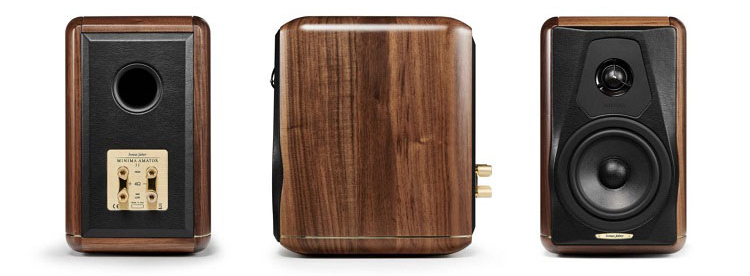
I must admit that I was a bit concerned about how the Minima Amator IIs would fare after first firing them up out of the box. Initially, they sounded compressed and boxy. Bass seemed almost too tight and the midrange didn’t have the typical Sonus faber richness and liveliness that I am accustomed to. Considering that they use very similar drivers to other Sonus faber designs that sound great, I was immediately blaming the solid wood cabinet. “No wonder no one uses wood anymore” was the thought that kept running through my mind. I put some EDM music on repeat (at a pretty high volume) and left the speakers alone for a few days. There was a noticeable improvement after about 150 hours, but I wasn’t fully satisfied until I had more than two weeks of continuous use on the speakers. By then, the boxy sound was completely gone. Bass response had improved and while still tight, it now had proper fullness as well. The midrange had opened up dramatically and the treble response was more extended as well. Frankly, this was one of the most noticeable improvements I have ever experienced from a speaker during a break-in phase. If you are going to demo these at a dealer, make sure that they have been played for at least 400 hours before forming any conclusions.

I started my critical listening with some classical music, as I figured that this might be one of the Minima Amator IIs fortes. As I’ve used the track recently with other reviews, I queued up “Lento Assai” from Rachmaninoff’s “Symphonic Dances” (Reference Recordings: 24-bit/96kHz FLAC file). As I suspected, the Minima Amator IIs rendered this track beautifully. I felt that the woodwinds in particular really shined with this cut. They had such a nice tone and body to them, with exceptional clarity and realism. The xylophone and glockenspiel notes that strike around the 12-minute mark sounded fantastic. There was a ton of air and shimmer to the individual notes that rang out through my room. Dynamics were not quite up to the level of full tower speakers, but the Minima Amator IIs held their own. I replayed this track with my Hsu ULS-15MkII engaged (crossed over at 50Hz) and it made a big difference to the overall impact. While the Minima Amator IIs were achieving solid 50Hz bass in my room (validated with warble tones) they are still a relatively small bookshelf. If high dynamics and deep bass are your things, you’ll probably want to use a subwoofer with them. I would advise you to choose a high-quality, sealed sub as that should mate better with the very tight mid-bass extension of the Minimas.
Female vocals were equally appealing through the Minima Amator IIs. “Your Heart is as Black as Night” from Melody Gardot’s “My One and Only Thrill” (CD: Verve B001NESPHC) sounded superb. Melody’s voice came through with excellent clarity and surprising body for a bookshelf speaker. I was equally impressed with the clarity and sense of musical “rightness” that I heard as well. The Minimas really excelled in the midrange, which made the whole track seem very accurate. Perhaps it is because they have less low-end bass, but I felt the Minima Amator IIs were slightly brighter in their presentation than either my Sonus faber Olympica IIIs or the Olympica Nova Vs that I recently reviewed. This is not a bad thing and I think that the Minima Amator IIs could appeal to critics of Sonus faber who classify their sound as too smooth. This little bit of extra detail was a real benefit with the trumpets on this track, which sounded very brassy without being fatiguing. The Minima’s centered Melody’s voice nicely between the two speakers and presented a very convincing soundstage.
“Blue Skies” from Diana Krall’s “Turn up the Quiet” (24-bit/192kHz FLAC file) sounded even better than the Gardot cuts. The added resolution was immediately apparent with an overall bigger sound and increased clarity. The bass line was quick and really tight. Again, things just sounded very accurate. Krall’s closely mic’d vocals shone through and the quick-moving piano notes flowed without any muddiness. Imaging was really good with this track, as I could clearly discern where each instrument was on the soundstage. I ran through a few other songs from this album, and each sounded just as good through the Minima Amator IIs.

To see how they would handle some heavier stuff, I put on “When My Train Pulls In” from Gary Clark Jr.’s “Blak and Blue” (Warner Bros, 24-bit/96kHz FLAC file). From the opening guitar riff, I knew the Minimas had things right. The overdriven tone of Clark’s guitar sounded fantastic. Not only was the tone sweet, but the definition of each individual note was perfect, highlighting his exceptional technique. There was no excessive brightness to the guitar notes, even once Clark kicks into solo mode and lays heavily into the Wah-Wah pedal. His vocals sounded pure and clean and emanated from a space right between the two speakers. The bass notes remained clean, tight, and punchy, even as I progressively turned up the volume to over 90dB. Once again, the term accurate came to mind. The Minima Amator IIs didn’t seem to be adding anything to the mix that wasn’t in the recording. They just let the smooth groove of this track flow and I really got into it.
One of my most enjoyable experiences with the Minima Amator IIs came by pure chance. I was browsing through the USB drive I have connected to my OPPO Blu-ray player looking for some additional lossless files to play and found a 16/44.1 FLAC rip of Richard Durand’s “In Search of Sunrise 13.5” (CD: Songbird B00ZIU0FCK). For those of you into EDM, Richard Durand needs no introduction. He’s been one of the biggest names in progressive/epic trance DJ’ing for many years now and is one of my personal favorite DJs within the trance genre. “In Search of Sunrise 13.5” is a great example of his typically excellent song choice as well as mixing skills (I highly recommend listening to the mixed version of this, not the separated single tracks to get the full experience). This entire album sounded amazing through the Minima Amator IIs. Track 5, “Soulstring” from Moonbeam has a very quick bass line anchoring the whole track. This line has some very quick transitions between the differing bass notes that can be a bit muddy if a speaker’s bass driver isn’t up to the task. The Minima Amator IIs had no such issues. They kept up with the fast transitions and kept the individual bass notes easily discernable. These notes aren’t ultra-deep, but they carried a nice clean thump to them. They also retained their clarity as I upped the volume to a high level. I crested 90dB and heard no sign of distortion. The 150mm mid-woofer was able to move enough air that I was feeling that oh so club-esque thump to the chest. I really didn’t expect such a small speaker to be able to do this. When the synth lines of this track kick in, there was a huge sense of sound staging and depth, which is surprising for dance music. The synth notes seemed to come from a space between and above each speaker before bouncing back and forth. This expansive sound filled the room and lent a very ethereal quality to this track, which is huge for a “trance” song. The synthesizer notes sounded just right in the midrange, helping me to lose myself in the simple beauty of this cut. Late in the song, there are a few synthesized “ice-block” sounds that ring out and then trail off with a sweet (yet artificial) reverb. These also sounded great and echoed out into the background with very natural decay.
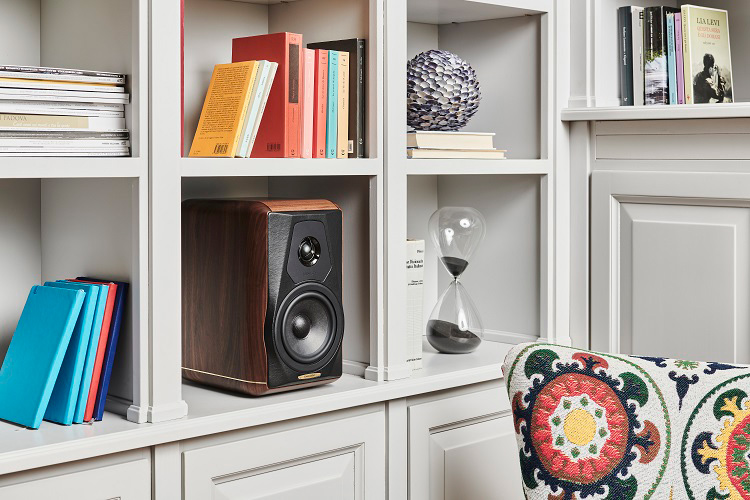
At $2000 each, the SONUS FABER MINIMA AMATOR II isn’t cheap, but their incredible build quality and premium materials deliver a lot of great sound for the money.
- Good bass given their small size
- Beautifully rich midrange
- Detailed and accurate but not excessively bright treble response
- Great imaging and soundstage depth
- More color options
- More bass is always welcome
- Stands are optional but should be included for best sound
Besides the gorgeous solid walnut cabinetry, the Minima Amator IIs also sound fantastic with any type of music. The Minima Amator IIs give you a piece of history combined with excellent modern-day performance. That’s something you don’t see very often in high-end audio.
Sonus faber set out to build a speaker that would not only appeal to long-time fans of the brand, but to new customers as well. In that goal, they have succeeded with the Minima Amator II. If their gorgeous walnut cabinetry and rich black leather don’t catch your eye, their incredibly well-balanced sound will. I don’t know how many times I’ve said, “they don’t build them like they used to” when it comes to modern material goods, but the Sonus faber Minima Amator II is the perfect counter to that statement. On second thought, scratch that. These aren’t merely built like they used to – they are flat-out better. Sonus faber has brilliantly combined their historic wood-working skill with modern technology and design principles to create a speaker that looks old-school but performs at the cutting edge. The Minima Amator II is one of the best-sounding and musically engaging bookshelf speakers I have ever heard and is destined to become a classic.


